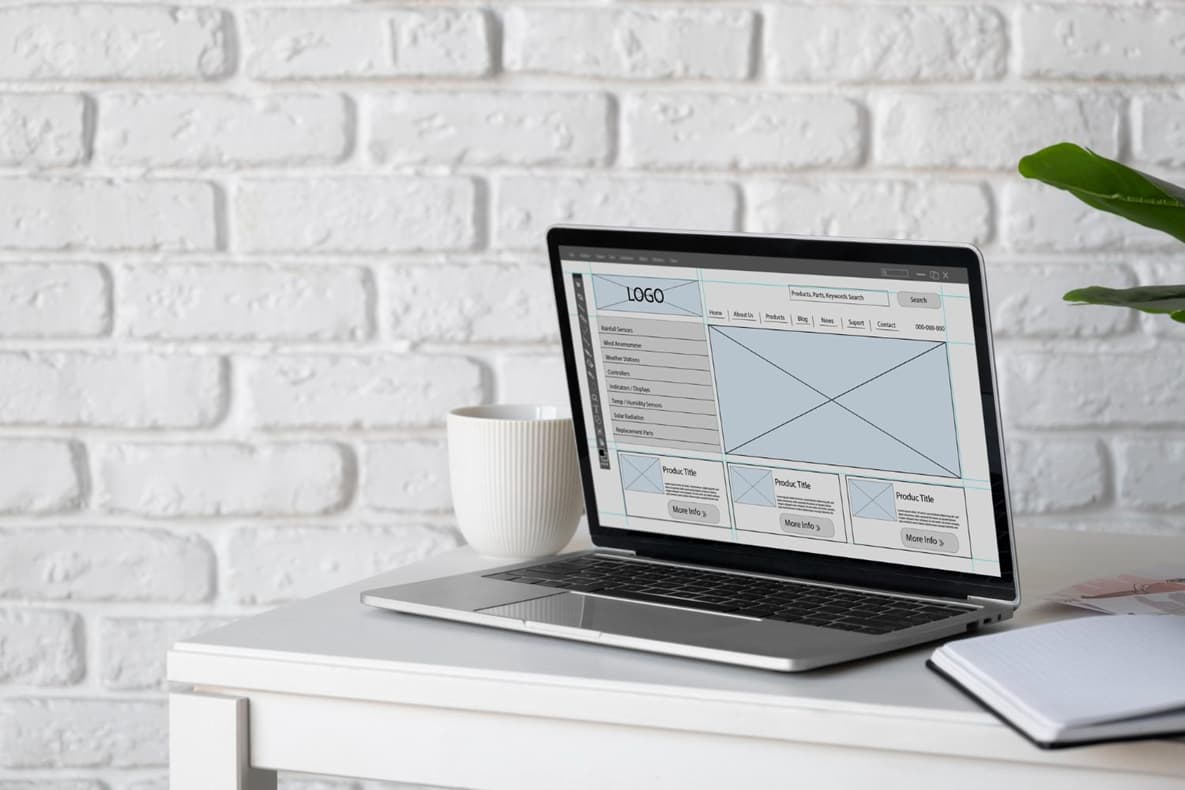Creating a standout WordPress website is an art that combines creativity, technical skills, and a deep understanding of what visitors need. For web designers and developers, mastering this craft is essential to delivering exceptional online experiences. This blog post will guide you through key design strategies to help you create a WordPress site that not only looks stunning but also functions seamlessly.
Introduction to WordPress Website Design
WordPress powers over 40% of the web, making it a crucial platform for web designers and developers. Its flexibility, ease of use, and broad range of customization options make it a go-to choice for creating websites. In this post, we’ll explore essential design strategies to help you craft a perfect WordPress website. You’ll learn about the fundamentals of web design, key design strategies, and the latest trends shaping the future of WordPress development.
The Fundamentals of Great Web Design on WordPress
In this section, we’ll delve into the essential principles and practices that form the foundation of exceptional web design on WordPress.
Importance of User Experience (UX) and User Interface (UI)
User experience (UX) and user interface (UI) are the cornerstones of great web design. UX focuses on the overall experience users have when interacting with your site, while UI deals with the visual elements that facilitate this interaction. A well-designed UX/UI ensures that your website is intuitive, easy to navigate, and pleasing to the eye. Start by mapping out the user journey and creating wireframes to visualize the layout. Test these designs with real users to gather feedback and make improvements.

Optimizing for Mobile Responsiveness
With more than half of global web traffic coming from mobile devices, optimizing your WordPress site for mobile responsiveness is non-negotiable. Choose responsive themes that automatically adjust to different screen sizes. Use media queries in your CSS to fine-tune the layout and ensure images and text scale appropriately. Google’s Mobile-Friendly Test tool can help you identify areas for improvement and ensure your site offers a seamless mobile experience.
Understanding the Basics of WordPress Themes and Plugins
Themes and plugins are the building blocks of any WordPress site. Themes control the visual presentation, while plugins add functionality. When selecting a theme, consider its design flexibility, speed, and support. Premium themes often offer more customization options and better support. Plugins can enhance your site’s functionality, but be cautious about overloading your site with too many, as this can affect performance. Stick to reputable sources and regularly update both themes and plugins to maintain security and performance.
Key Design Strategies for Crafting a Unique WordPress Website
In this section, we’ll explore key design strategies that will help you differentiate your WordPress site and create a memorable online presence.
Choosing the Right Theme: Custom vs. Pre-built Themes
Choosing between a custom and a pre-built theme depends on the project’s complexity and budget. Custom themes offer complete control over design and functionality but require more time and resources. They are ideal for unique branding and specific business needs. Pre-built themes, on the other hand, provide a quicker, more cost-effective solution. Look for themes with high customization options, good reviews, and regular updates to ensure longevity and compatibility.
Utilizing Color Schemes and Typography for Branding and Readability
Color schemes and typography play a significant role in the site’s branding and readability. Choose a color palette that reflects your brand’s personality and evokes the desired emotional response from your audience. Tools like Adobe Color can help you create harmonious color schemes. Typography should be legible across all devices. Stick to web-safe fonts and consider using Google Fonts for a wide selection of free, high-quality fonts. Consistent use of colors and fonts will enhance your site’s visual appeal and brand recognition.

Incorporating High-Quality Images and Graphics
Images and graphics are powerful tools for capturing attention and conveying messages. High-quality visuals can make your site more engaging and professional. Use images that are relevant to your content and optimized for the web to ensure fast loading times. Tools like TinyPNG can help compress images without losing quality. Consider incorporating custom illustrations or icons to add a unique touch to your design. Remember, every image should serve a purpose and align with your overall design strategy.
Enhancing User Engagement and SEO
Now, we’ll discuss strategies to improve user engagement and optimize your WordPress site for search engines, ensuring that your site not only attracts visitors but keeps them coming back.
Implementing Effective Call-to-Actions (CTAs)
Call-to-actions (CTAs) guide users towards desired actions, such as signing up for a newsletter or making a purchase. Effective CTAs are clear, concise, and compelling. Use action-oriented language and create a sense of urgency. Placement is crucial—CTAs should be prominently displayed and easily accessible. A/B testing different versions of your CTAs can provide insights into what resonates best with your audience.
The Role of Content in Engaging Users and Improving SEO
Content is king in the digital world. High-quality, relevant content not only engages users but also boosts your site’s SEO. Regularly update your blog with informative articles, how-to guides, and case studies that address your audience’s pain points. Use keywords naturally within your content to improve search engine rankings. Engaging content encourages visitors to spend more time on your site and increases the likelihood of social sharing, further enhancing SEO.
Best Practices for On-Page and Off-Page SEO in WordPress
On-page SEO involves optimizing individual pages to rank higher and earn more relevant traffic. Key practices include using descriptive meta tags, optimizing headings, incorporating keywords naturally, and ensuring fast load times. Plugins like Yoast SEO can simplify these tasks. Off-page SEO focuses on activities outside your website, such as building backlinks and engaging on social media. Guest blogging and influencer partnerships can help build authority and drive traffic to your site.
Performance Optimization and Security
Next, we will delve into essential strategies for optimizing your WordPress site’s performance and securing it against potential threats.
Importance of Website Speed and How to Optimize It
Website speed is critical for user experience and SEO. Slow-loading sites frustrate users and can lead to higher bounce rates. Optimize your site’s speed by compressing images, leveraging browser caching, and minimizing HTTP requests. Use performance-enhancing plugins like WP Rocket to streamline these processes. Regularly monitor your site’s speed with tools like Google PageSpeed Insights and GTmetrix to identify and fix performance bottlenecks.

Basic Security Measures for WordPress Websites
Security is a top priority for any website. Protect your WordPress site by using strong passwords, implementing two-factor authentication, and keeping your themes and plugins updated. Install security plugins like Wordfence to monitor for threats and prevent unauthorized access. Regularly back up your site to ensure you can quickly recover from any potential breaches. Educate yourself on common security risks and stay informed about the latest best practices to keep your site safe.
The Future of WordPress Design
The web design landscape is continuously evolving, and staying ahead of trends is crucial for maintaining a competitive edge. Some emerging trends include the use of AI and machine learning for personalized user experiences, the rise of voice search, and the increasing importance of accessibility. Headless WordPress, which decouples the front-end and back-end, is gaining popularity for its flexibility and performance benefits. Keep an eye on these trends and consider how they can be integrated into your WordPress design strategy to stay relevant and innovative.
Conclusion
Crafting a perfect WordPress website requires a blend of creativity, technical expertise, and a deep understanding of user needs. By focusing on UX/UI, optimizing for mobile responsiveness, and choosing the right themes and plugins, you can create a site that stands out. Incorporate effective CTAs, high-quality content, and SEO best practices to engage users and boost visibility. Prioritize performance and security to ensure a smooth and safe user experience. Stay informed about the latest web design trends to keep your WordPress site ahead of the curve. Apply these strategies and watch your WordPress website thrive. If you have any questions or need further assistance, feel free to reach out and share your insights. Let’s continue to push the boundaries of what’s possible with WordPress design.
